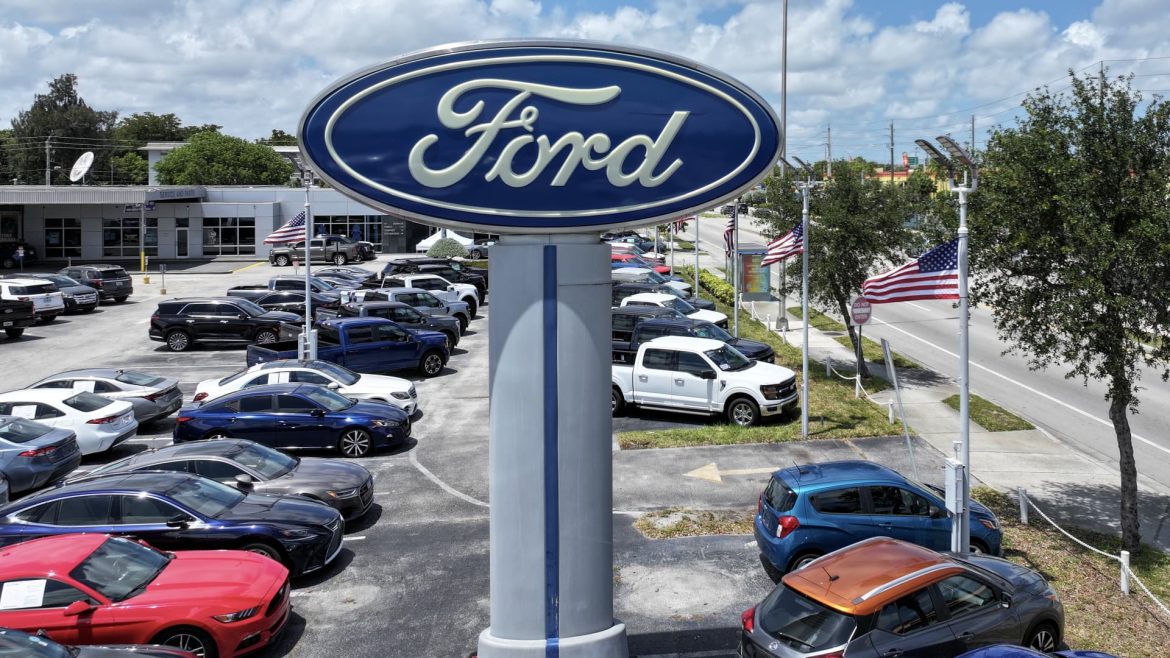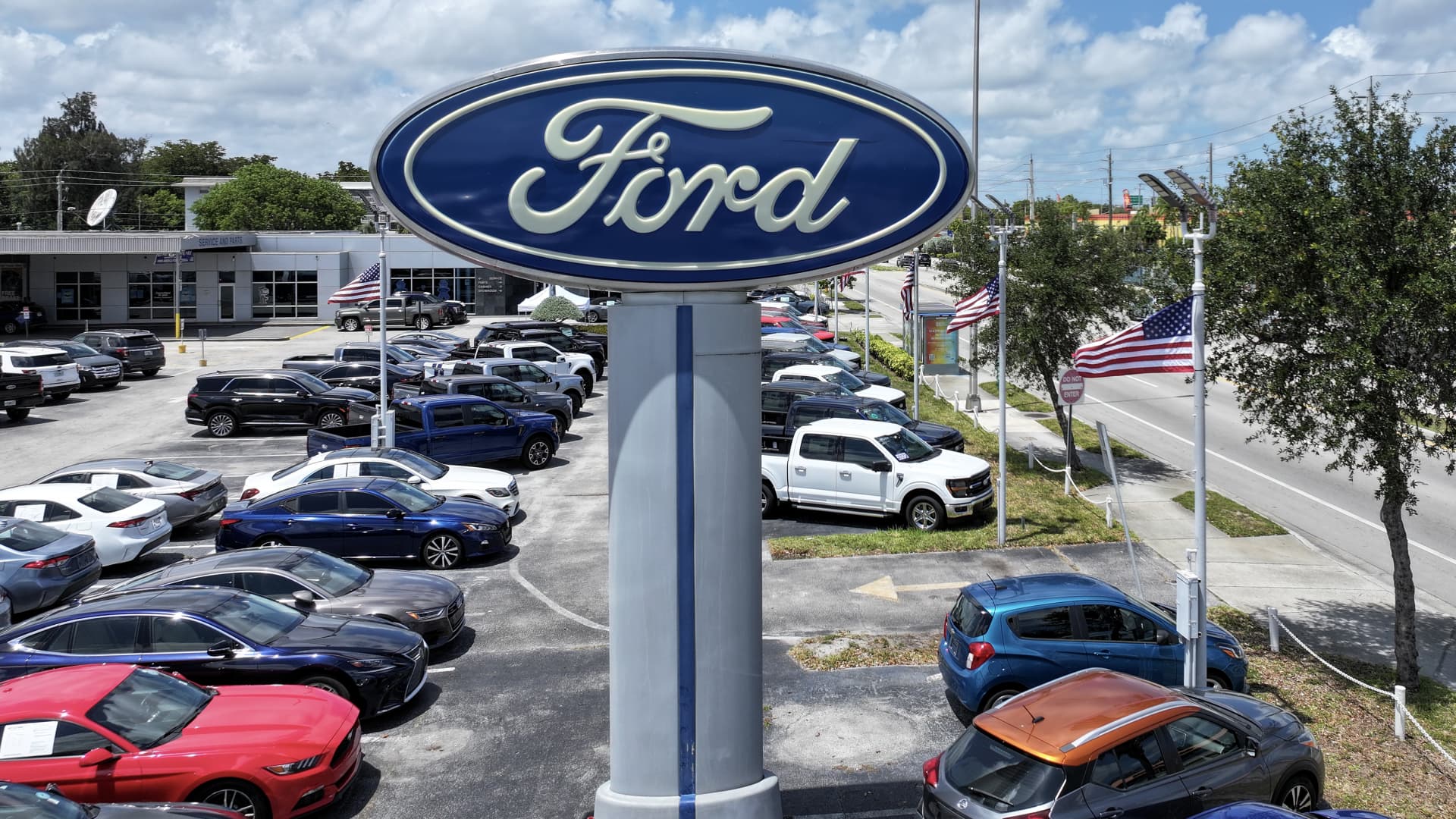Ford’s Q2 sales surge marks a significant milestone for the company, reflecting its ability to navigate market challenges and capitalize on emerging opportunities. The second quarter of 2023 saw Ford Motor Company report a remarkable 14.2% increase in sales, a figure that far outpaces the industry’s estimated 1.4% growth. This performance underscores Ford’s strategic strengths and highlights the company’s potential for sustained growth in the coming years.
A Closer Look at Q2 Sales Figures
Ford’s Q2 sales figures are particularly impressive when viewed in the context of broader industry trends. The company sold 527,905 Ford and Lincoln brand vehicles, representing the highest sales volume for a second quarter since 2019. While this figure is a positive indicator of recovery, it is important to note that sales have not yet returned to pre-pandemic levels, which exceeded 600,000 units. This discrepancy suggests that while Ford has made significant progress, there is still room for growth.
The sales surge was driven by several key factors, including strong demand for pickup trucks, particularly the F-Series. F-Series sales climbed 11.5% to 222,459 units, marking the best second-quarter performance for this category. This is significant because trucks are a key profit center for Ford, contributing substantially to the company’s revenue. The success of the F-Series highlights the importance of Ford’s truck lineup in driving overall sales growth.
The Role of Powertrain Diversity
Ford’s commitment to offering a broad range of powertrain options has also played a crucial role in its Q2 sales performance. The company provides consumers with a variety of choices, including gas, hybrid, electric, and diesel vehicles. This diversity allows customers to select vehicles that best fit their needs and preferences, thereby expanding Ford’s market appeal.
The success of hybrid vehicles, in particular, has been a notable highlight. While the broader market experienced a surge in sales of battery-electric and hybrid vehicles, Ford’s EV sales slipped during the quarter. However, the company’s second-quarter sales growth was driven entirely by hybrid vehicles. This underscores the importance of hybrid technology as a bridge to full electrification and suggests that Ford’s strategy of offering a range of powertrain options is paying off.
Supply Chain and Market Dynamics
Easing supply chain constraints have also contributed to Ford’s sales growth. The automotive industry has been grappling with supply chain issues, particularly a chip shortage, but as these issues abate, manufacturers like Ford are better positioned to meet consumer demand. This improvement in supply chain conditions has allowed Ford to ramp up production and fulfill orders more efficiently, thereby supporting its sales growth.
Additionally, pent-up demand for personal transportation has played a role in driving sales. As consumers return to pre-pandemic levels of mobility, there has been a surge in demand for vehicles, particularly those that offer versatility and reliability. Ford’s lineup, which includes a range of models suited to different consumer needs, has been well-positioned to capitalize on this trend.
Segment Performance: Strengths and Weaknesses
While overall sales figures are positive, a closer examination of individual segments reveals a more nuanced picture. Truck sales, as mentioned earlier, were a major strength, with overall truck sales up 23% in the first half of the year compared to the same period in 2022. However, not all models performed equally well. For example, sales of the Expedition fell by 48%, and the Navigator was down 17%. This suggests that while some models are highly successful, others may need strategic adjustments to improve their market appeal.
In terms of electrified vehicles, Ford has seen mixed results. While the broader market experienced a surge in sales of battery-electric and hybrid vehicles, Ford’s EV sales slipped during the quarter. This mixed performance highlights the need for a refined strategy in the electrification space. Ford must focus on enhancing the appeal of its electric vehicle lineup, potentially through technological innovation, improved range, and competitive pricing.
Financial Implications and Future Outlook
Ford’s strong sales performance in Q2 has had a positive impact on the company’s financial outlook. The company reported an 18% increase in profit for the second quarter, driven by strong results in North America and Asia Pacific. This financial improvement is a testament to Ford’s ability to leverage its sales growth to enhance profitability.
Looking ahead, Ford faces both opportunities and challenges. The company expects $1 billion in cost reductions this year from lower warranty expenses and production costs, with adjusted EBIT anticipated to normalize. However, Ford is also navigating a complex and evolving market landscape, including potential impacts from tariffs, fluctuations in industry sales volume, and changing consumer preferences.
Navigating the Road Ahead
Ford’s recent sales surge reflects its ability to adapt to market dynamics and capitalize on key strengths. However, several challenges loom on the horizon, demanding strategic foresight and decisive action. The company must focus on enhancing the appeal of its electric vehicle lineup, building resilience in its supply chain, and managing costs effectively. By addressing these challenges proactively, Ford can maintain its competitive edge and position itself for sustained growth in the years to come.
In conclusion, Ford’s Q2 sales surge is a testament to the company’s resilience and adaptability in a rapidly changing market. The success of the F-Series, the importance of hybrid technology, and the easing of supply chain constraints have all contributed to this impressive performance. However, Ford must continue to innovate and adapt to maintain its competitive edge in the face of evolving consumer preferences, technological advancements, and market volatility. By doing so, Ford can build on its recent success and achieve long-term growth and profitability.





